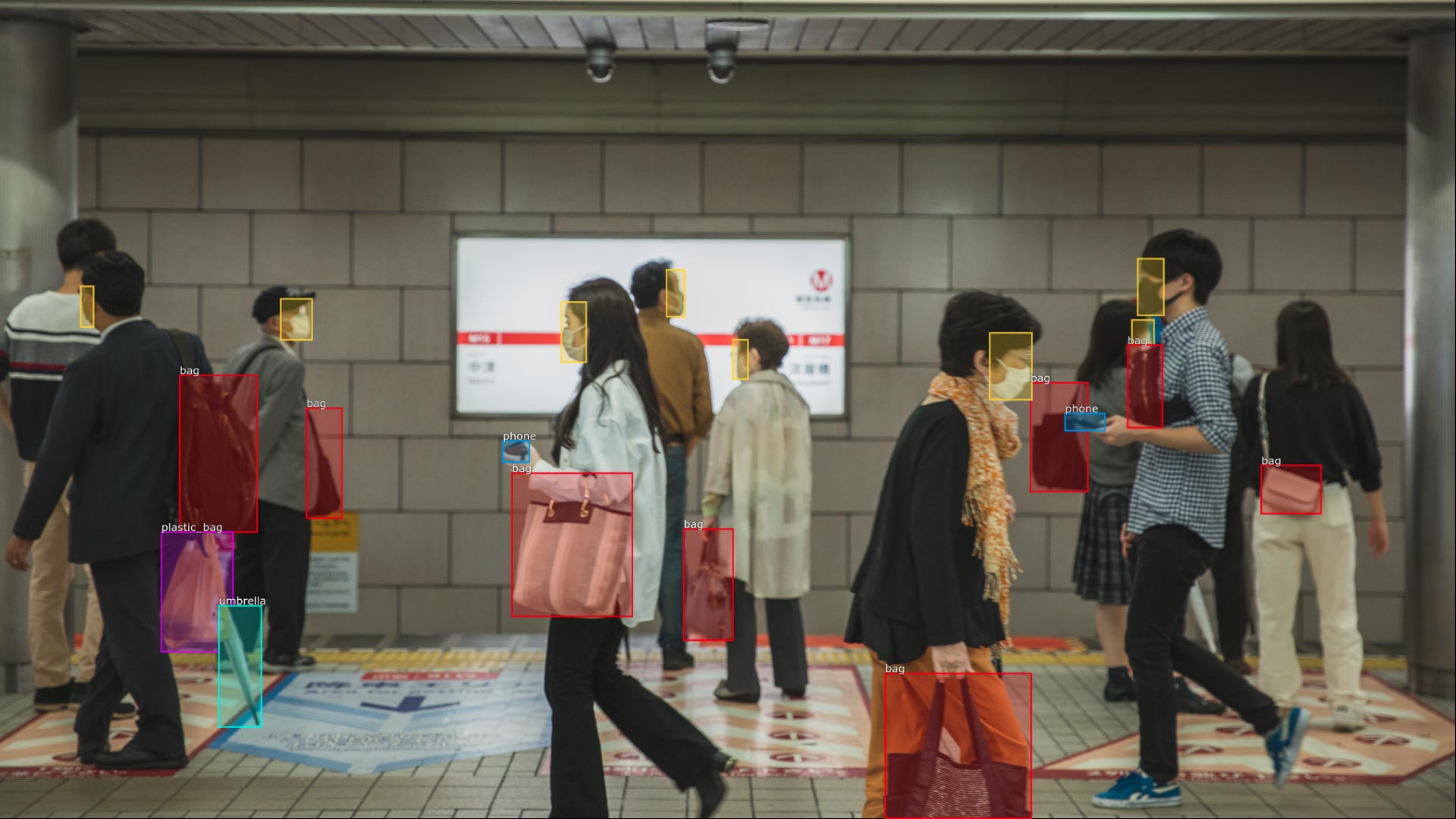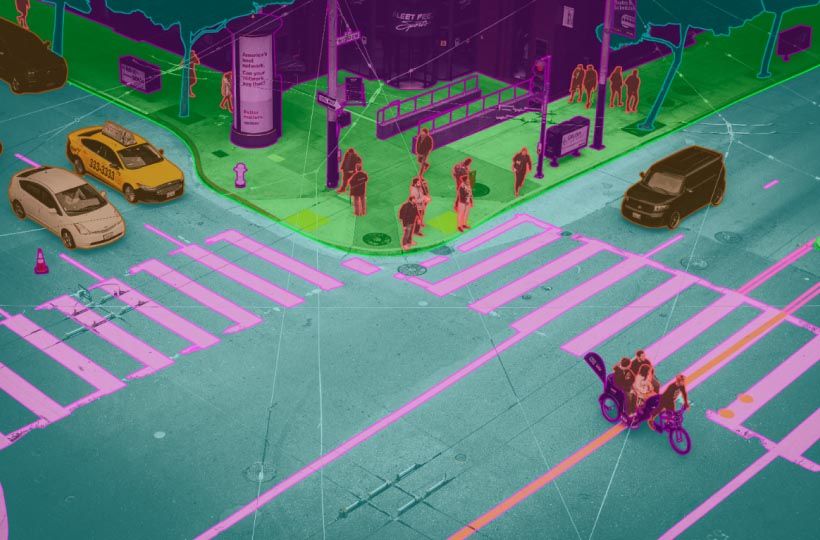How Computer vision and AI are used to secure public places

Computer vision (CV) and artificial intelligence (AI) are increasingly being used to help secure public places. Utilizing CV, AI, and machine learning algorithms, video surveillance technologies can help increase security against threats such as theft, terrorism, and vandalism.
In this article we will take a precious look at how CV and AI assist to build smart cities.

Video Surveillance
Computer vision and AI have enabled a modern version of video surveillance; one that is intelligent, efficient and capable of understanding the environment just like humans do. One company leading the way in this space is Voxel51, which has collaborated with Baltimore CitiWatch to create an artificial-powered video analytics platform. Used in public places, this platform allows for computer vision to be used to determine if a crime is being committed or if something unusual is going on. It also allows operators to quickly sense potential threats, adding an extra layer of security.
Beyond simply tracking potential threats though, computer vision technology can help identify people in public places. Facial recognition is an increasingly popular technology used to protect public places, making it easier for individual persons to be identified quickly and ensuring appropriate action can be taken. Computer Vision and AI are proving invaluable when it comes to protecting businesses and properties by providing advanced security capabilities. It also has the potential for accuracy that traditional video surveillance does not offer. By using these technologies together we can better secure ourselves against criminals and unexpected events in heavily populated areas where our safety is at risk.
Facial Recognition
Facial recognition technology is one of the most controversial applications of Artificial Intelligence, as it raises multiple ethical concerns due to privacy. It is being used heavily by law enforcement agencies to identify criminals or missing people through their camera feeds by comparing faces to watchlists. AI video analysis is also used for anomaly detection in traffic, subway, campus and other public places, boats, and buildings. Moreover, computer vision can optimize efficient use of intermediates such as scaling images for face landmark detection.
These powerful capabilities are making AI facial recognition a go-to resource for companies looking to secure their environments and enhance guest experiences. The result? Not only does using AI cameras help deter criminals from committing crimes in public places but it also helps track the number of people coming in and out at different times and locations – which leads to improved crowd management capabilities.

Crowd Management
In the realm of crowd management, computer vision and artificial intelligence (AI) is increasingly being used to protect public places. Computer vision technology allows for the capture and digitization of real-life scenes, providing new opportunities to detect threats earlier and better. Smart solutions such as biometrics, facial recognition, smart cameras and video surveillance systems are now commonplace in many public spaces. In addition to providing enhanced safety for those inside the space, computer vision technology can be used for crowd control purposes as well.
For instance, computer vision can be used to detect threats from large groups or monitor suspicious behaviors. The technology can also be used to search for individuals in a crowd by matching facial biometric information against an existing database. This helps law enforcement officers detect and prevent potential security incidents quickly and effectively.
The rise of AI also brings capabilities such as object recognition which can identify different types of objects in a given scene – such as cars, people or high-risk items – faster than a human operator could ever do it alone. This provides an additional layer of security when it comes to monitoring large crowds in public places.
In conclusion, computer vision and AI have become an integral part of securing public spaces all over the world. By offering innovative solutions such as biometrics, facial recognition and object detection, these technologies are enabling organizations to stay one step ahead of potential threats while improving security procedures all around.
Object Recognition
Object recognition is a computer vision technique used to recognize, locate, and classify objects in digital images or real-life scenarios. This new technology can be used to secure public places by making sure social distancing measures are being followed. Computer vision social distancing, such as viso.ai from Switzerland, is an AI-powered real-time application that provides social distancing security services to companies and communities.
The object detection technique is similar to tagging, except the API returns the bounding box coordinates (in pixels) for each object found in the image. By using this information, security guards and cameras can easily identify any person or object in their view and respond accordingly. With this computer vision technology, companies can ensure public safety while quickly monitoring and responding to incidents.
Utilizing recent advances in computer vision and AI have drastically improved safety in public places by ensuring social distance is maintained and any potential threats are monitored efficiently and effectively. This technology has enabled companies around the globe to create smart city solutions that keep citizens safe and secure in an ever growing urban environment.

Smart City Solutions
Smart cities use technology to help secure public places for citizens. Security solutions, such as computer vision and AI, can provide situational awareness in order to ensure the safety of assets and people. Computer vision enables surveillance systems to provide around-the-clock monitoring, helping to eliminate some of the challenges associated with high-risk events. This is especially beneficial for cities where security incidents are frequent, as it can be used to quickly detect and respond to incidents.
AI opens up new possibilities when it comes to creating safer and more sustainable living environments. With AI, cities can better monitor their urban infrastructure and improve public services as well as detect suspicious behavior in a lower-cost manner. Additionally, it can be used to identify areas of safety concerns, such as identifying a change in lighting or spotting unauthorized entry into areas where shared public resources are located. This information is then used to alert law enforcement or emergency services when needed.
Smart city solutions make smarter use of technology that helps secure public places safe for citizens and visitors alike. By combining computer vision and AI technology, cities have the potential not only to maintain existing levels of security but also to create a smarter and more sustainable future for its citizens.

Conclusion
Computer vision and AI have huge potential for the security of public places, providing powerful tools to monitor activity and protect citizens. We’ve discussed how they can be used in video surveillance, crowd management and object recognition, as well as facial recognition. They are also key elements of smart city solutions. As these technologies become more developed and accessible, their usage looks set to continue to grow in securing public places around the world.



